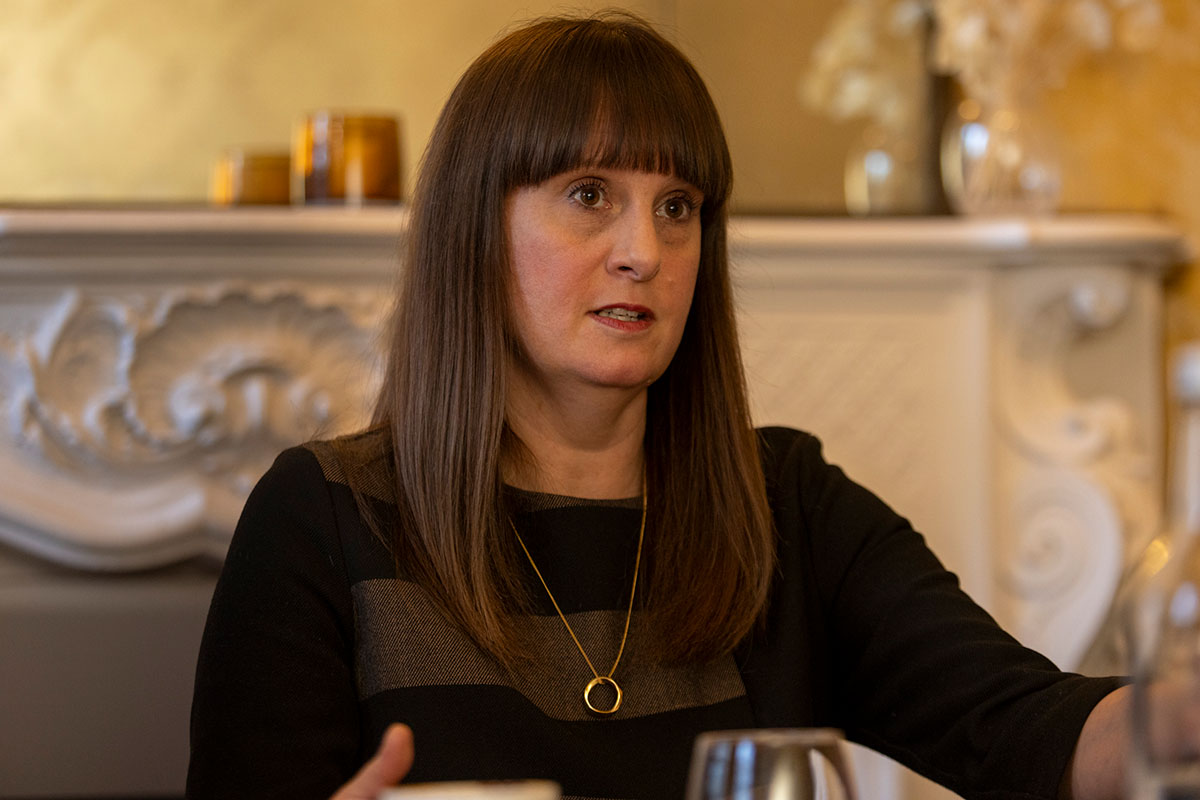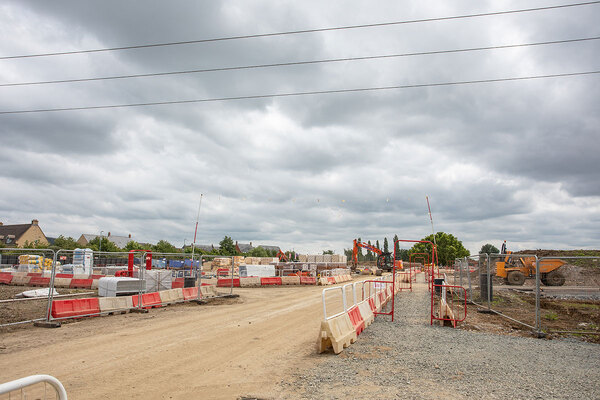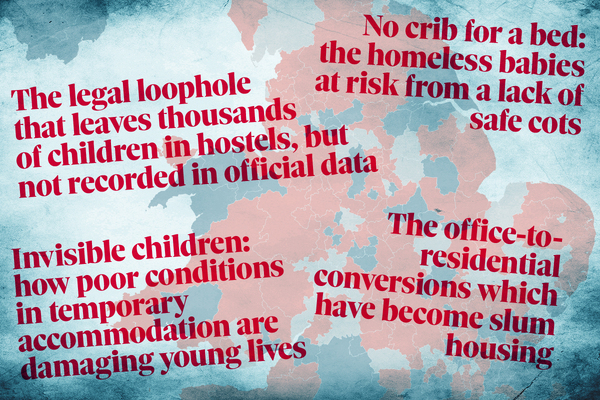Michael Lyons and co-commissioners on what the next government can learn from the Lyons Review
Ten years after the publication of the Lyons Housing Review, Inside Housing brought together Sir Michael Lyons and four of his co-commissioners. Katharine Swindells reports on the discussion. Photography by Jonathan Goldberg

It has something of a school reunion feel to it. There is catching up on babies born, new jobs, and joy at meeting in person. It has been 10 years since the publication of the Lyons Housing Review, so Inside Housing brought together Sir Michael Lyons with four of his co-commissioners in a discussion chaired by Inside Housing’s editor Martin Hilditch.
Although a couple of hours is hardly enough time to discuss the report’s full 170 pages and all 39 recommendations (see box), the group reflected on what has changed since the report’s publication.
“In my view, the headline conclusions remain as valid today as they were at the time,” says Sir Michael. “Our emphasis on, as we termed it at the time, ‘getting the whole orchestra to play rather than just parts’ remains valid,” he adds. “There are some specific recommendations in the review, which I think have just languished, that need to be picked up. If you want to work out how to begin to bridge that gap in housing supply, there are some propositions that will help you at least make progress.”
The main change in the past decade, says Kate Henderson, chief executive of the National Housing Federation, who at the time of the report was chief executive of the Town and Country Planning Association, is how much the housing crisis has worsened. At the start of 2014, there were 58,000 families in temporary accommodation in England. Now that has almost doubled to 106,000. But with that, she says, has come increased public awareness of the crisis.
“I think 10 years on, we do have a greater understanding of the causes of the housing crisis,” Ms Henderson says. “I think there is greater acceptance that the housing crisis is impacting people right across the country, in all income brackets, of all ages.”
Grainia Long, chief executive of the Northern Ireland Housing Executive (who was chief executive of the Chartered Institute of Housing when she sat on the Lyons Review), says: “I think you’ve seen a lot more expectation by the public now that we listen to them much, much more, that we take account of their views, and they want to see a much more open and accountable system of decision-making.”
But despite increased awareness of the housing crisis, supply remains more dire than ever.
Sir Michael wrote in the report foreword: “We currently build half the number of homes we need each year and the consequences in terms of overcrowding, thwarted ambition, rapidly rising rents and the impact of house price inflation on the management of the national economy are clear for all to see.”
The review’s aims
Through the 1980s and 1990s, Sir Michael Lyons held the chief executive role at three major local authorities, and in the 2000s, he chaired several reviews and commissions. In 2013, he was tasked by the leader of the opposition to carry out the Lyons Housing Review, published in 2014.
The review called for the next government on day one after the 2015 general election to “establish homebuilding as a clear priority”, and then proposed a series of recommendations, ranging from national to
local, with the goal of seeing annual net growth of homes reach 200,000 homes by 2020.
The roadmap for action includes:
- Sub-targets to be set at the local authority level
- Legislation for garden cities, Compulsory Purchase Orders, land taxation
- The creation of new homes corporations and infrastructure funds
- Set targets for the release of surplus public land
- Promote transparency of the Land Registry to register not just ownership but also options to buy land
- Legislation for a speeded-up planning process and new government powers to force local councils to produce and follow housebuilding plans
- Initial restriction of sale of houses to non-local residents
- ‘Use it or lose it’ to penalise land hoarding
The Lyons Review called for 200,000 new homes a year. Even though this has been achieved, with 234,000 net additional homes delivered in England in 2022-23, government targets now say we need to be building at least 300,000 new homes in England a year, leaving a significant gap.
“We’re somewhere between 60,000 and 80,000 a year short of where we need to be,” Sir Michael says. “And it’s not clear that we’re on a trajectory that takes us there. If you want much more rapid growth, you’ve got to think of something more dramatic.”
Of course, the Lyons Review did not have the impact it was hoped, since it was commissioned by the Labour Party ahead of an election in which the Tories would gain a 10-seat majority, establishing a near-decade-long tenure of the party. “This was about influencing the policies of a Labour government that never came,” says Ed Turner, deputy leader of Oxford City Council, who held the same role at the time of the review.
But there have been “some positive changes over the period, maybe not as many as we would like”, Sir Michael says. The scrapping of the Housing Revenue Account borrowing cap by Theresa May’s government is cited by the group as one such positive change, alongside the founding of Homes England to replace the Homes and Communities Agency, which the report said needed to be “re-tasked”.
The sector has changed hugely in the past decade, not least in response to tragedies such as Grenfell and the death of Awaab Ishak. Mr Turner says this is coupled with “stripping the capacity from local authorities, and the impact of austerity”. But there have been less dramatic shifts, too, in the increased importance of placemaking and regeneration, and the prioritisation of environmental, social and governance (ESG) analysis.
“Environmental and social conditions were not especially visible in the report, and that’s because the agenda there has changed,” says Bill Hughes, current global head of real assets at Legal & General Investment Management, and managing director of Legal & General Property at the time of the review. “We’ve got new issues to think about,” he adds, but meeting the new regulations around safety and ESG does “have an adverse impact on [financial] viability”.
Another area that has seen a major shift is finance, and the Lyons Review underestimated private sector investment, says Mr Hughes. “In the UK, there was negligible amounts of investment in the sector 10 years ago,” he says. “What has changed is that long-term institutional capital has seen how stable, reliable and high-quality income can be from these investments.”
Ms Long says that, if writing the recommendations today, she would be far more bullish on demanding community infrastructure in line with housing supply. “We were a bit tepid,” she says. “We need to be much more interventionist on what infrastructure we need.”
The group is supportive of Labour’s pledge to reform the planning system if it wins the next election, which the group says is more sorely needed than ever. “The planning stuff’s been chaotic, hasn’t it?” says Mr Turner. “It’s been pushed from pillar to post politically.”
“Planning has not had the leadership that it’s needed. And that’s exacerbated the housing crisis,” says Ms Henderson. “It has just been plagued by piecemeal tinkering and contradictory reform, and we’re now in a situation where the planning system is not set out to meet the need,” she says. She adds that we need to see mandatory housing targets and mandatory land supply, as “without that, it’s very difficult to see how you can meet national needs over the next 10 to 20 years”.
Give councils the tools
Sir Michael says it is crucial that councils are given both the tools and the expectations to make their contribution to increasing housing supply. He wants to see the government move from a permissive model to a contractual one: “There’s no choice about the numbers, you’re going to have to make your contribution, but you can tell us where they would be best,” he says.
The group has been heartened by words from the Labour Party on housing so far, but it wants whole-hearted advocacy of social housing specifically – both for its role in tackling the housing crisis, but also in boosting the national economy.
“One of the problems is that this is a bit seen as a welfare issue, rather than an economic issue,” says Sir Michael. “If you had a growth strategy, and you were looking for which domestic industries you could pump up quickly, this would be one of the first you’d address.”
There was a fear at the time of the review’s publication that it aligned too closely with, as housing commentator Jules Birch put it at the time, “the political obsession with aspiration and ownership”.
Today, Sir Michael says, he fears the Labour Party is still stuck there. “I do think that the parties are still stuck in the debate that Margaret Thatcher kicked off, that actually somehow you were a lesser person if you lived in public housing,” he says. “Nobody will be honest and say, ‘We cannot build enough houses to meet a national aspiration for everyone to be homeowners.’”
Mr Hughes says he would like to see “more political leadership and more gravity behind housing as an issue”, and the housing minister become a more highly regarded role. One of the Lyons Review’s early recommendations was for the housing minister to attend Cabinet, supported by a cross-government taskforce, independent advisory Housing Commission and national Housing Observatory.
Mr Hughes says: “We’ve all seen housing ministers come and go, and housing ministers don’t generally sit in Cabinet with any great status. It seems to be a rung to somewhere else,” he adds.
Looking back over a decade, Ms Long says she is struck by how much can change in a decade, but also how quickly time can pass. “Reading back over the report made me realise we do tend to overestimate what we can do in a short period and underestimate what we can do in a long period,” she says. “Housing is a 30-year roadmap and that’s why the report is still relevant.”
Ms Henderson says the chop and change of the Conservative government’s 14 years in office means it has not had the longevity of planning of the Labour government in the first decade of the century. Labour has an opportunity to change that, she says, if it wins the election, but there needs to be a focus on solutions.
So if the next government is genuinely committed to tackling the housing crisis, the review is there and ready to read. Sir Michael says: “It requires the government to step up to the rostrum and pick up the baton, to get this whole orchestra working.”
Sir Michael will be delivering a main address at Housing 2024, updating his report from 10 years ago to present day – what has changed and what hasn’t. Book your delegate pass at housingevent.com and hear from him and 500 other speakers in Manchester, in June.
Sign up for our daily newsletter
Already have an account? Click here to manage your newsletters















